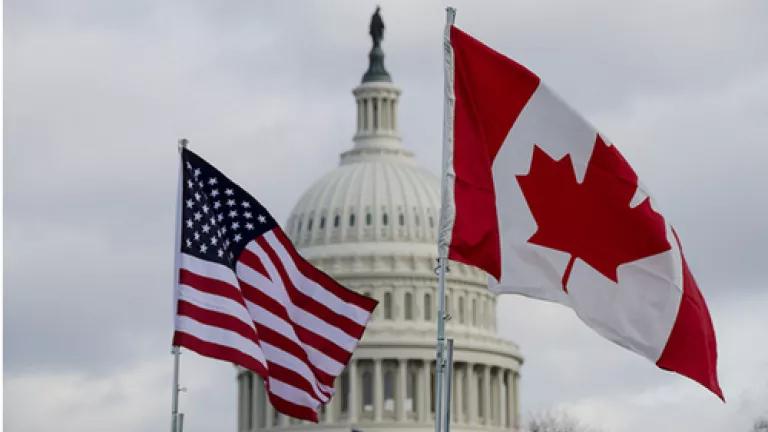
The United States and Canada have entered an historic period of change in the priorities that guide their climate and clean energy relationship and management of their shared Arctic region. When President Obama and Prime Minister Trudeau meet this week they have an opportunity to show that both are prepared to lead efforts to protect the Arctic and our children from climate devastation. We are hopeful that these two leaders will rise to the challenge and help start this year off with transformative action.
Here is what to watch when President Obama hosts Prime Minister Trudeau for a state visit.
Protecting US and Canadian shared Arctic. As Arctic nations, the United States and Canada share responsibility for much of the region's spectacular ecological wealth, unique cultures, and exceptional wildlife populations. No place on earth is experiencing climate change as fast as the Arctic. Its indigenous people, wildlife, and vital habitats are already feeling severe impacts, threatening ways of life that have existed for centuries. In a vicious cycle, as sea ice retreats and seasonal thaws come earlier, new industrial threats are making these dangers even more acute, particularly increased fossil fuel extraction.
Addressing these threats requires international cooperation. Oil spills, commercial fishing, shipping and other industrial activities in the Arctic have impacts far beyond the borders of individual countries. In this delicate area we simply cannot afford to lock in the next generation of carbon emissions by drilling, and it is essential to protect ecologically important areas from bottom trawling and other commercial extractive or polluting activities.
This week's announcements are happening at the same time the U.S. Administration is poised to put forward it's next 5-year offshore drilling program. The whole world is watching whether President Obama will send a clear signal that the U.S. is serious about doing all we can to move to a clean energy future. He can start to answer that question definitively, if he announces he's using his executive power to withdraw the oil under the U.S. Arctic Ocean from this and all future offshore programs.
Both countries need to do much more in the coming years to ensure that this precious place is preserved for generations to come. The upcoming US-Canada summit must show a commitment to ensure that a resilient Arctic remains intact for generations to come, not only to benefit the region but also because of the importance of an intact, sustainable Arctic for the entire globe.
Climate and clean energy leadership. Following the climate agreement in Paris, both countries have committed to significantly cut their emissions in the coming decade and to strengthen those efforts over time to ensure that the world is on a safe climate trajectory. To achieve the intent of this agreement both countries will need to step-up their climate actions in the coming years. This will require deep emission cut from the fossil fuel sector in both countries and ambitious clean energy agendas.
After years of climate inaction, Prime Minister Trudeau of Canada announced forcefully that "Canada is back". This is a welcome sign that the new government will implement additional steps to drive a clean energy economy in Canada and cut emissions to meet and exceed their current climate targets. More needs to be done in Canada as they are projected to significantly miss their 2020 and 2030 targets without new actions.
President Obama has implemented a number of bold climate actions over the course of his Presidency. As a result, U.S. emissions are on trajectory to meet the U.S. climate target for 2020. But more will be needed to ensure that this target is easily met and to meet the climate target as a part of the Paris Agreement.
The Summit provides an excellent opportunity to build on the momentum from Paris by showing that these two countries will implement additional actions within their own borders and work together to help spur a clean energy revolution. We released a "Blueprint" that outlines the kinds of actions that these two countries should advance during their meeting. Hints have emerged that the two countries will announce actions on oil and gas methane, the super greenhouse gases called HFCs, and electric vehicles but what specifics will emerge are uncertain at this stage.
----------------------
We will be watching to see if this meeting charts a new course of climate action between Canada and the U.S. We need both countries to move from dialogue to action.

